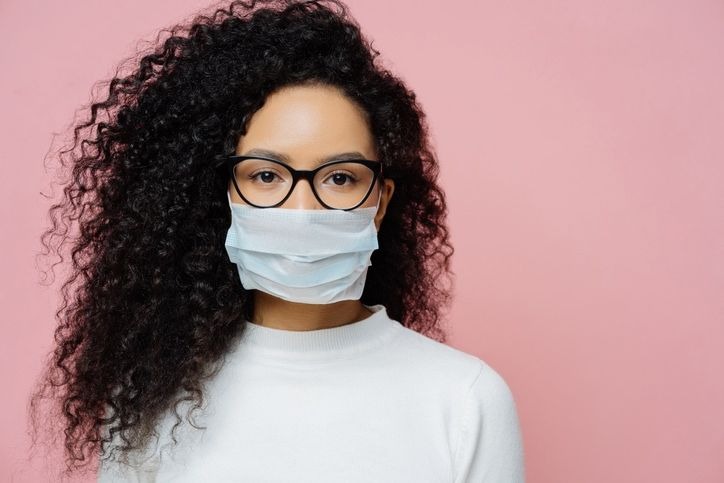How to breathe with a surgical or fabric mask?
Caution : You must consult your doctor for your health. This page presents only a personal and alternative point of view which should not be considered as an attempt to prescribe medicine.
The mask, whether surgical or fabric, is now part of our daily life.
Despite the many advantages it offers, this protective accessory is shunned by many people because of certain disadvantages.
Among the maligned disadvantages of the mask, the difficulty of breathing comfortably tops the list.

If you are complaining about it too, then this article is for you.
Above all, you have to wear your mask well
In an environment where the risk of contamination by COVID-19 is constantly present, wearing a mask becomes a civic act.
Indeed, beyond our own protection, the mask is worn in order to avoid contaminating those who are in our immediate environment.
To do this, make sure you wear the mask properly.
The preliminary gesture before wearing the mask is hand washing to avoid leaving pathogens on the mask.
First, you have to identify the correct sense of the mask.
If it's a surgical mask, the metal nose clip is at the top.
For a fabric mask, a slight triangular-shaped protrusion indicates the top.
Then you have to pass the rubber bands behind the head or the ears.
Then, check that the mask completely covers the nose, mouth and chin.
Finally, you have to test your breathing.
To do this, cover the mask with both hands and breathe.
If the mask stays against the face, then that's a good sign.
Otherwise, if there is a leak, readjust.
A properly fitted mask will allow optimal pulmonary ventilation.
Breathe efficiently with the mask
As soon as you wear the mask, it becomes obvious that the breathing effort will be higher.
Also, the respiratory effort will be relative to the thickness of the mask.
The thicker the mask, the more effort you will have to breathe.
The golden rule is therefore to choose your mask well.
If you have a penchant for fabric masks, avoid synthetic fabrics.
Masks made with cotton fabrics allow better ventilation.
A fairly simple trick to breathe better is to inhale through your nose and especially breathe with the diaphragm.
This method is easier with masks having relief.
Indeed, they create space and facilitate inspiration through the nose.
The only drawback is that on expiration there is a residual air pocket which is not evacuated.
Be careful not to force it too much during inspiration.
The goal is not to end up in a state of continuous maximum inspiration.
Otherwise, you will be short of breath and have to remove your mask or place it under your chin.
With each exhale, be sure to relax well to empty your lungs.
This increases the respiratory efficiency of the next inspiration.
NOTE: if you have to wear a mask all day, choose one that is as thin as possible so as not to accumulate too much CO2 in the blood.
A few gestures that relieve the effort of breathing
Although wearing a mask is beneficial, it is sometimes restricting breathing.
There are some simple things that can help us avoid spending a lot of energy on breathing to the point of being out of breath.
- Hydrate yourself by drinking mineral water often.
- Do not wear the mask during sporting activity: pulmonary ventilation is very high in this case.
- Apply less makeup to allow aeration of the pores on the face.
- Prioritize moisturizers.
- Regularly refresh your face: this gesture reduces the effect of heat and suffocation.
These preventive actions help the body to better endure the breathing difficulty associated with wearing a mask.
NOTE: if you experience difficulty in breathing, do not hesitate to remove the mask in private to breathe quietly.
Actions to be avoided at all costs
Many people are very clever about wearing a mask, especially when it interferes with their breathing.
Here are some things to avoid at all costs.
- Make holes in the mask at the nose or mouth.
- Do not cover the mouth or nose: a mask loses all its usefulness if it does not cover the mouth and nose. These are the two emission orifices of postilions carrying pathological germs.
- Put the mask below the chin, on the forehead or let it hang over the neck.
- Wear a mask that lets air in from all sides: this increases the risk of inhaling particles
Each of these gestures compromises the effectiveness of the mask.
Protection of the mask against pollution
Did you know that living in a big city makes you twice as likely to get lung cancer from pollution from exhaust gases?
This is the reason why Asians living in mega-cities constantly wear a mask when they are in the city.
This protects you from micro chemical particles that could get into your delicate lungs.
On the other hand, of course, in the forest or in the countryside, wearing a mask is stupid.
Nature is loaded with negative ions, particles that are extremely beneficial to our health, so we should not deprive ourselves of them.
In conclusion, wearing a mask has many advantages (coronovirus / covid19 protection, pollution protection, calms the syndrome of hyperventilation chronic), but it also presents dangers.
The dangers are present when the individual wears a mask too long, too thick, and without cleaning it regularly.
So it's up to you to find the right balance.
❤ The ultimate guide to breathing
Intermittent Breathing : Discover the method to quickly relieve your anxiety and chronic fatigue (positive effects from the first use).Read also :
Previous article : How to breathe with the diaphragm (breathing muscle)?
Next article : How to breathe to run without getting out of breath?

